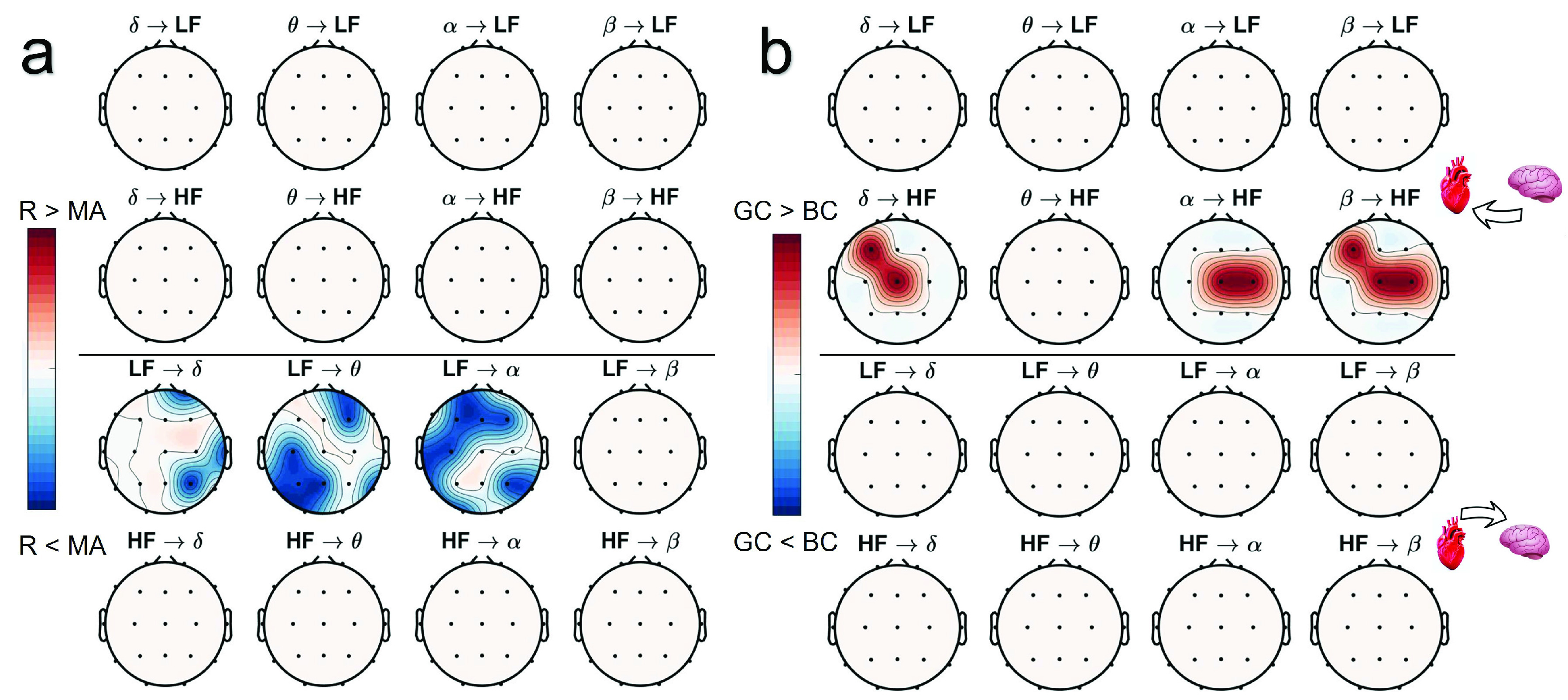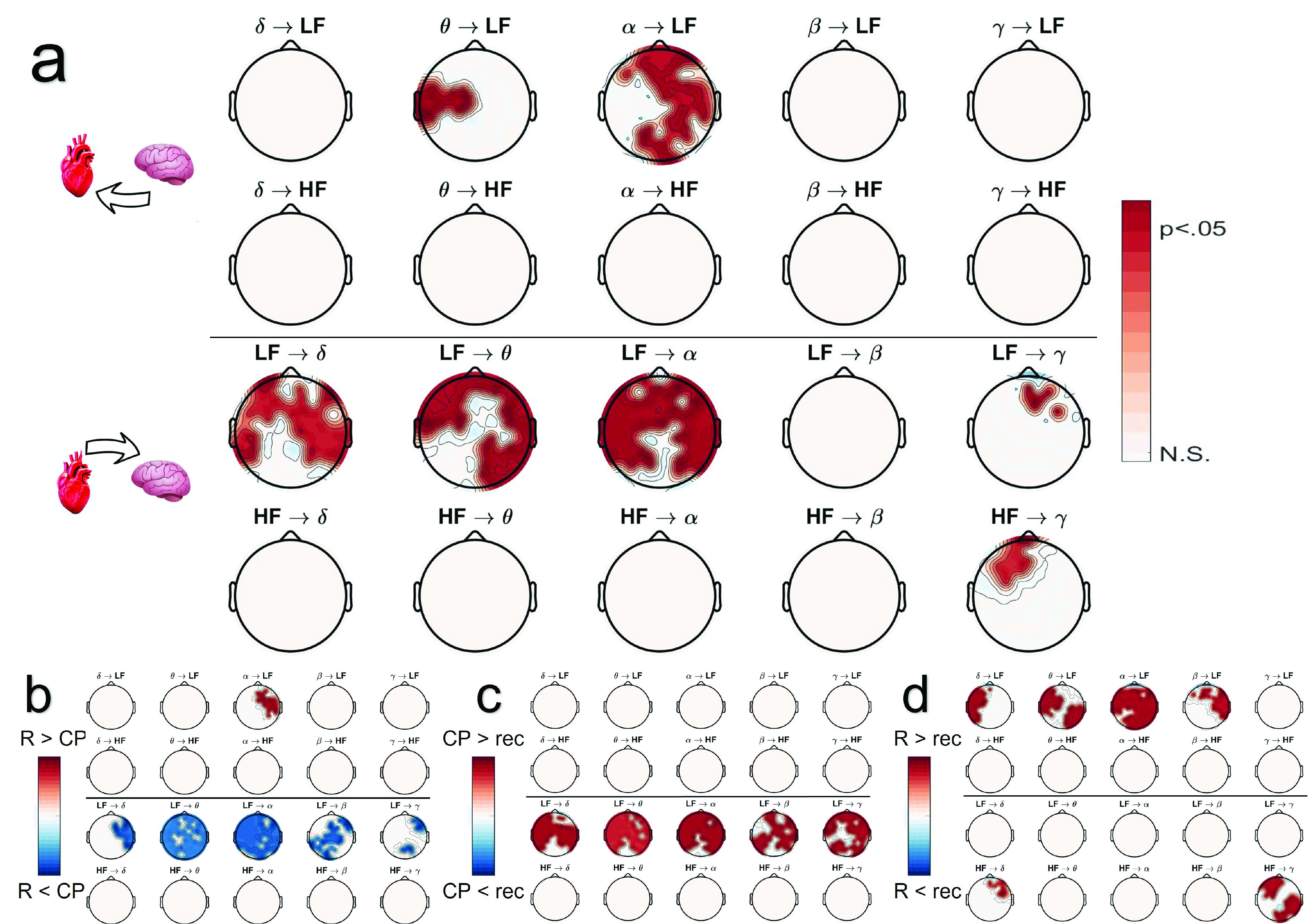心理和身体压力下的复杂脑心映射。
IF 3.7
3区 医学
Q2 ENGINEERING, BIOMEDICAL
IEEE Journal of Translational Engineering in Health and Medicine-Jtehm
Pub Date : 2023-03-29
DOI:10.1109/JTEHM.2023.3280974
引用次数: 0
摘要
目的:中枢神经系统和自主神经系统被认为是复杂的动态系统,其中每个系统作为一个整体都表现出单个系统子组件所没有的特征。它们还不断相互作用以维持身体稳态,并对内源性和外源性刺激做出适当反应。这种相互作用被全面地称为功能性脑心相互作用(BHI)。然而,这种相互作用是否也表现出复杂的特征,也就是说,整个神经系统的动力学是否固有地表现出复杂行为,或者这种复杂性是否仅仅是中枢和自主系统的特征,仍不确定。在这里,我们对心理和身体压力条件下的BHI动力学进行了复杂性映射。方法和程序:从56名执行心算或冷压任务的健康个体中获得脑电图和心率变异性序列,并将生理序列适当组合,得出方向性BHI序列,其复杂性通过模糊熵进行量化。结果:实验结果表明,BHI复杂性主要在从大脑到心脏的传出功能方向上受到调节,主要针对精神压力时的迷走神经振荡和身体压力时的交感-迷走神经振荡。结论:我们得出的结论是,BHI图谱的复杂性可能为中枢和自主活动的动力学以及它们的持续相互作用提供了深刻的信息。临床影响:这项研究增强了我们对中枢和自主系统之间相互作用的理解,有可能为心血管、神经和精神疾病的更准确诊断和靶向治疗铺平道路。本文章由计算机程序翻译,如有差异,请以英文原文为准。



Complex Brain–Heart Mapping in Mental and Physical Stress
Objective: The central and autonomic nervous systems are deemed complex dynamic systems, wherein each system as a whole shows features that the individual system sub-components do not. They also continuously interact to maintain body homeostasis and appropriate react to endogenous and exogenous stimuli. Such interactions are comprehensively referred to functional brain–heart interplay (BHI). Nevertheless, it remains uncertain whether this interaction also exhibits complex characteristics, that is, whether the dynamics of the entire nervous system inherently demonstrate complex behavior, or if such complexity is solely a trait of the central and autonomic systems. Here, we performed complexity mapping of the BHI dynamics under mental and physical stress conditions. Methods and procedures: Electroencephalographic and heart rate variability series were obtained from 56 healthy individuals performing mental arithmetic or cold-pressure tasks, and physiological series were properly combined to derive directional BHI series, whose complexity was quantified through fuzzy entropy. Results: The experimental results showed that BHI complexity is mainly modulated in the efferent functional direction from the brain to the heart, and mainly targets vagal oscillations during mental stress and sympathovagal oscillations during physical stress. Conclusion: We conclude that the complexity of BHI mapping may provide insightful information on the dynamics of both central and autonomic activity, as well as on their continuous interaction. Clinical impact: This research enhances our comprehension of the reciprocal interactions between central and autonomic systems, potentially paving the way for more accurate diagnoses and targeted treatments of cardiovascular, neurological, and psychiatric disorders.
求助全文
通过发布文献求助,成功后即可免费获取论文全文。
去求助
来源期刊

IEEE Journal of Translational Engineering in Health and Medicine-Jtehm
Engineering-Biomedical Engineering
CiteScore
7.40
自引率
2.90%
发文量
65
审稿时长
27 weeks
期刊介绍:
The IEEE Journal of Translational Engineering in Health and Medicine is an open access product that bridges the engineering and clinical worlds, focusing on detailed descriptions of advanced technical solutions to a clinical need along with clinical results and healthcare relevance. The journal provides a platform for state-of-the-art technology directions in the interdisciplinary field of biomedical engineering, embracing engineering, life sciences and medicine. A unique aspect of the journal is its ability to foster a collaboration between physicians and engineers for presenting broad and compelling real world technological and engineering solutions that can be implemented in the interest of improving quality of patient care and treatment outcomes, thereby reducing costs and improving efficiency. The journal provides an active forum for clinical research and relevant state-of the-art technology for members of all the IEEE societies that have an interest in biomedical engineering as well as reaching out directly to physicians and the medical community through the American Medical Association (AMA) and other clinical societies. The scope of the journal includes, but is not limited, to topics on: Medical devices, healthcare delivery systems, global healthcare initiatives, and ICT based services; Technological relevance to healthcare cost reduction; Technology affecting healthcare management, decision-making, and policy; Advanced technical work that is applied to solving specific clinical needs.
 求助内容:
求助内容: 应助结果提醒方式:
应助结果提醒方式:


